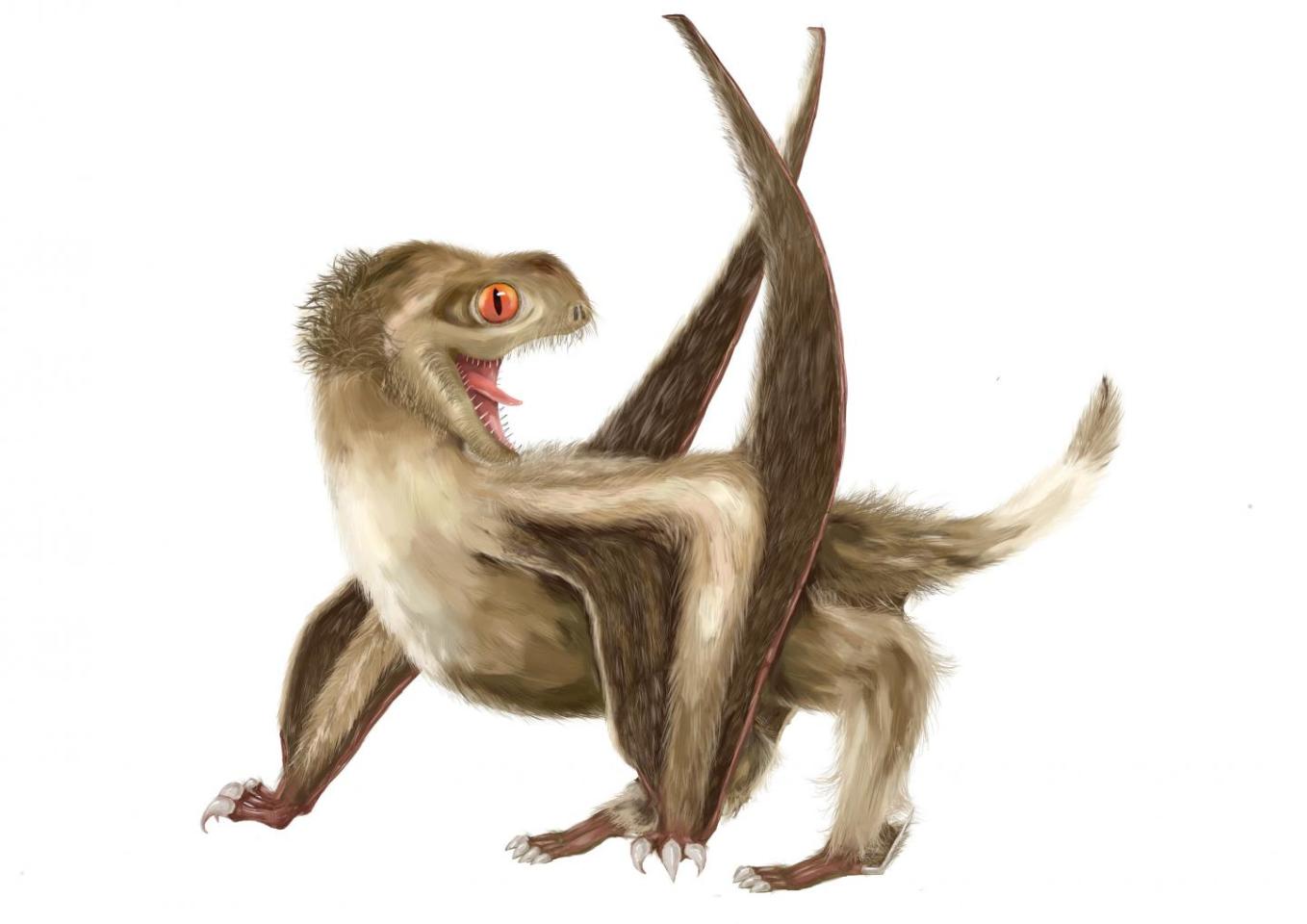Debate is raging about whether pterosaurs, flying reptiles that lived alongside the dinosaurs, had feathers or not. Two years ago a study claimed to have found fossil evidence of “protofeathers” on pterosaurs, but now another team claims the evidence doesn’t stack up, and the creatures were instead bald.
Pterosaurs ruled the skies for over 100 million years, ranging in size from a house cat to a Cessna 172. They’re often depicted in movies and other media as scaly creatures with leathery bat-like wings, but that probably wasn’t the case. Evidence suggests that they were covered in single-stranded, hair-like structures called pycnofibers, which would have formed a fine pelt.
But in 2018, a bombshell study suggested that some pterosaur pycnofibers had branching structures, resembling very early versions of feathers. The team, led by Zixiao Yang of Najing University, claimed to have found evidence of four distinct types of these protofeathers, covering different parts of the animals’ bodies.
Now, a new study argues against this idea. David Unwin of the University of Leicester and David Martill from the University of Portsmouth have examined this evidence and concluded that the previous team misinterpreted its findings.

Yuan Zhang
Unwin and Martill point out that within the 28 pterosaur specimens with preserved pycnofibers, Yang et al focused on only two specimens that had branching structures. Instead of feathers, the new study argued that the structures were in fact “aktinofibrils” – fibers that form part of the structure of the wing membrane of the pterosaurs. The branching effect seen was likely produced by these aktinfibrils unravelling as they decay.
“The idea of feathered pterosaurs goes back to the nineteenth century but the fossil evidence was then, and still is, very weak,” says Unwin. “Exceptional claims require exceptional evidence – we have the former, but not the latter.”
But the original researchers dispute the new findings. In a response article, Yang and his team argued that the branching structures couldn’t have been decaying aktinofibrils, because they observed different types of structures on different parts of the body. Protofeathers would conceivably differ around the body, since they serve different functions.
“The Unwin–Martill scenario would require some decay process that could produce different feather-like structures in different parts of the body,” the statement reads.
There’s more at stake in this debate than just figuring out if Jurassic Park was wrong (again) – it could change up the whole family tree of pterosaurs, dinosaurs and modern birds. If Yang is right and pterosaurs sported protofeathers, that would push back the emergence of the first feather-like elements to about 70 million years earlier, to the last common ancestor between pterosaurs and dinosaurs.
That would imply that all dinosaurs started off with some form of early feathers, before select groups, such as the huge long-necked sauropods, lost them again. That’s the opposite of the currently accepted theory, which is that feathers only evolved later on theropod dinosaurs – two-legged carnivores like T-rex and velociraptor.
Of course it may well be the case that our current understanding is wrong, and this family tree does need to be shaken up, but doing so would require more substantial evidence. In the meantime, the debate will no doubt continue, and the implications could drastically change our view of these amazing ancient creatures.
“If they really did have feathers, how did that make them look, and did they exhibit the same fantastic variety of colors exhibited by birds?” says Martill. “And if they didn’t have feathers, then how did they keep warm at night, what limits did this have on their geographic range, did they stay away from colder northern climes as most reptiles do today. And how did they thermoregulate? The clues are so cryptic, that we are still a long way from working out just how these amazing animals worked.”
Both the new study and the response by the original team were published in the journal Nature Ecology and Evolution.
Source: University of Portsmouth
Source of Article